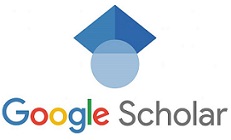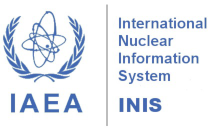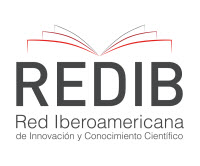Dissemination of information in nuclear sciences and public acceptance of irradiated foods in Basic Education
DOI:
https://doi.org/10.15392/2319-0612.2024.2681Keywords:
radura, tecnologia nuclear, alimentos irradiadosAbstract
Technological advances, such as food irradiation, aim to improve environment sustainability, human health, and the well-being of society. Food irradiation is a well-established and effective technology for preserving and disinfecting food, keeping food quality and nutritional properties. The lack of adequate information about nuclear sciences can lead to resistance, compromising acceptability. Prejudices and misinformation lead society to associate nuclear techniques with harmful effects on human health and on the environment. The recent reformulation of the Brazilian National Common Core Curriculum favor interdisciplinarity and provides opportunities for the inclusion of nuclear sciences in schools. Themes that are crucial to national development, such as Science and Technology, as well as Food and Nutrition Education, are now mandatory subjects in schools. Considering the vast content available on the Internet, with channels of direct communication with young people, this study aimed to analyze the prior knowledge about nuclear sciences, especially food irradiation, among Elementary School students at a well-known private school in São Paulo. The research with groups of students allows communicators to identify current gaps and specific needs for the development of future actions to combat disinformation. The results bring a paradoxical perception of elementary school students, whose prior knowledge is fragmented and decontextualized. However, the research demonstrates that students are receptive to new learning, and tend to support national technological advances, including nuclear sciences. Also, the offer of quality information, in a formal learning environment, can instigate critical thinking, reformulate opinions and contribute to the acceptability of peaceful applications of nuclear technology.
Downloads
References
[1] PASTURA, V. et al. Perspectivas Dialógicas Sobre a Energia Nuclear: (Des)Informação com Vista à Agenda 2030. In X Congresso Nacional de Educação (CONEDU 2024), Fortaleza, 2024.
[2] ROBERTS, P. B. The Safety and Nutritional Adequacy of Irradiated Foods. In: Encyclopedia of Food Safety. Second Edi ed. [s.l.] Elsevier, 2024. v. 3p. 612–620. DOI: https://doi.org/10.1016/B978-0-12-822521-9.00074-5
[3] BHATNAGAR, P. et al. Impact of irradiation on physico-chemical and nutritional properties of fruits and vegetables: A mini review. Heliyon, v. 8, n. 10, p. e10918, out. 2022. DOI: https://doi.org/10.1016/j.heliyon.2022.e10918
[4] LEVY, D.; SORDI, G. M. A. A.; VILLAVICENCIO, A. L. C. H. Irradiação de alimentos no Brasil: revisão histórica, situação atual e desafios futuros. Brazilian Journal of Radiation Sciences, v. 8, n. 3, p. 1–16, 2020. DOI: https://doi.org/10.15392/bjrs.v8i3.1241
[5] D’SOUZA, C. et al. Consumer acceptance of irradiated food and information disclosure – A retail imperative. Journal of Retailing and Consumer Services, v. 63, 1 nov. 2021. DOI: https://doi.org/10.1016/j.jretconser.2021.102699
[6] BRASIL. Ministério da Educação. Base Nacional Comum Curricular. Brasilia, 2018.
[7] BRASIL. Ministério da Educação. Temas Contemporâneos Transversais na BNCC. Brasilia, 2019. Disponível em: http://basenacionalcomum.mec.gov.br/images/implementacao/contextualizacao_temas_contemporaneos.pdf (acesso em 26 de fevereiro de 2025)
[8] LEVY, D. S.; SORDI, G. M. A. A.; VILLAVICENCIO, A. L. C. H. Construindo pontes entre ciência e sociedade: divulgação científica sobre irradiação de alimentos. Brazilian Journal of Radiation Sciences, v. 6, n. 1, p. 1–13, 28 jan. 2018. DOI: https://doi.org/10.15392/bjrs.v6i1.343
[9] PORTAL FIOCRUZ. Diagnóstico da Divulgação da Ciência na América Latina. Brasilia, 2018. Disponível em https://www.fiocruzbrasilia.fiocruz.br/diagnostico-apresenta-mapeamento-da-divulgacao-cientifica-na-america-latina (acesso em 26 de fevereiro de 2025)
[10] AGÊNCIA NACIONAL DE VIGILÂNCIA SANITÁRIA. Resolução RDC nº 21, de 26 de janeiro de 2001. Aprova o regulamento técnico para irradiação de alimentos. Brasilia, 2001.
[11]HKOURY, H.J.; LEVY D. (ORG). Investigando as Aplicações da Radioatividade: Curiosidades sobre diferentes áreas de atuação para inspirar professores e jovens pesquisadores. Editora Recanto das Letras. São Paulo, 2021.
[12] LEVY, DENISE; VILLAVICENCIO, ANNA L. A mega master interessante vida de uma manga irradiada. São Paulo, SP: Recanto das Letras, 2022.
[13] BARROS, JOAO P.A. de A. et al. Aplicação da radiação ionizante em resíduos agroindustriais. In 18th Congreso Argentino de Ciencia y Tecnologia de Alimentos. Buenos Aires, 2023.
Downloads
Published
Issue
Section
Categories
License
Copyright (c) 2025 Denise Levy, Viviane Benedetti, João Pedro Barros, Anna Lucia Villavicencio

This work is licensed under a Creative Commons Attribution 4.0 International License.
Licensing: The BJRS articles are licensed under a Creative Commons Attribution 4.0 International License, which permits use, sharing, adaptation, distribution and reproduction in any medium or format, as long as you give appropriate credit to the original author(s) and the source, provide a link to the Creative Commons license, and indicate if changes were made. The images or other third party material in this article are included in the article’s Creative Commons license, unless indicated otherwise in a credit line to the material. If material is not included in the article’s Creative Commons license and your intended use is not permitted by statutory regulation or exceeds the permitted use, you will need to obtain permission directly from the copyright holder. To view a copy of this license, visit http://creativecommons.org/licenses/by/4.0/






















